Will record-breaking lamb prices impact those for mutton and breeding ewes?
Key points
- The national Online Sheep Indicator is sitting at $249.57/head.
- Breeding ewe prices have risen 184%, or $162/head since March.
- Online sheep prices are at their highest level since 2020.
Saleyard lamb prices continue to break records. The National Trade Lamb Indicator (NTLI) closed last Friday at 1,195¢/kg carcase weight (cwt) – an all-time record. The Heavy Lamb Indicator is also performing well – this week reaching a record 1,175¢/kg cwt.
High lamb prices are being driven by an expectation of a tight lamb supply during the second half of 2025, into 2026. Drier conditions are causing tight supply – some of the worst on record. These conditions have reduced breeding ewe populations over 2024 and 2025.
Are record lamb prices driving higher mutton prices?
Most saleyard-sold mutton are destined for processors. However, ewes sold via online channels tend to be purchased by restockers, returned to the paddock and used for breeding.
Saleyard prices are driven by processor demand. Prices for mutton are currently high, nearly passing the 700¢/kg cwt level. They are just shy of the 2020 record, when the east coast drought broke and prices did fetch 700¢/kg cwt. Since March 2025, saleyard mutton prices have increased 100% to over $3/kg cwt.
Meat & Livestock Australia (MLA) launched the Online Sheep Indicator (OSI) in June this year to assess adult sheep prices in the restocked market. The OSI is underpinned by historical data. Since March 2025, the OSI has rocketed 184% or $162/head. Adult sheep sold online are currently averaging $250/head. Border Leicester x Merino’s prices are even high with those from NSW’s central west region reaching $418/ head.
What does this tell us?
Producers with a positive feed budget are confident high lamb prices will continue. The wallet is proving this sentiment – indicated by the price producers are willing to pay for restocker breeding ewes.
Producers are looking to take advantage of the current record-breaking lamb prices. Those who can (seasonally permitting) are investing in and growing their flocks for 2026.
Attribute content to: Steve Bignell, NLRS and Market Information Manager



